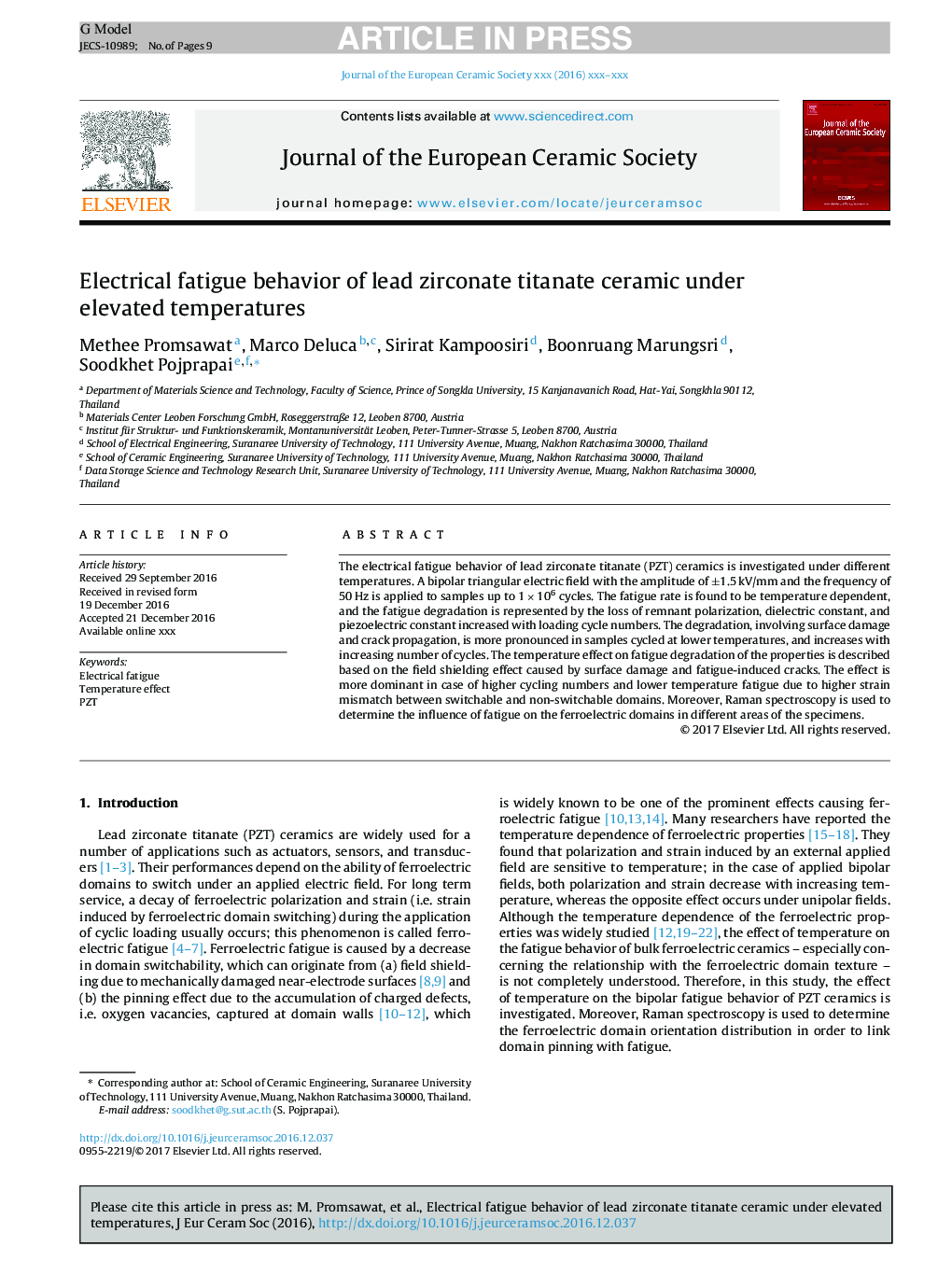| Article ID | Journal | Published Year | Pages | File Type |
|---|---|---|---|---|
| 5440521 | Journal of the European Ceramic Society | 2017 | 9 Pages |
Abstract
The electrical fatigue behavior of lead zirconate titanate (PZT) ceramics is investigated under different temperatures. A bipolar triangular electric field with the amplitude of ±1.5 kV/mm and the frequency of 50 Hz is applied to samples up to 1 Ã 106 cycles. The fatigue rate is found to be temperature dependent, and the fatigue degradation is represented by the loss of remnant polarization, dielectric constant, and piezoelectric constant increased with loading cycle numbers. The degradation, involving surface damage and crack propagation, is more pronounced in samples cycled at lower temperatures, and increases with increasing number of cycles. The temperature effect on fatigue degradation of the properties is described based on the field shielding effect caused by surface damage and fatigue-induced cracks. The effect is more dominant in case of higher cycling numbers and lower temperature fatigue due to higher strain mismatch between switchable and non-switchable domains. Moreover, Raman spectroscopy is used to determine the influence of fatigue on the ferroelectric domains in different areas of the specimens.
Related Topics
Physical Sciences and Engineering
Materials Science
Ceramics and Composites
Authors
Methee Promsawat, Marco Deluca, Sirirat Kampoosiri, Boonruang Marungsri, Soodkhet Pojprapai,
